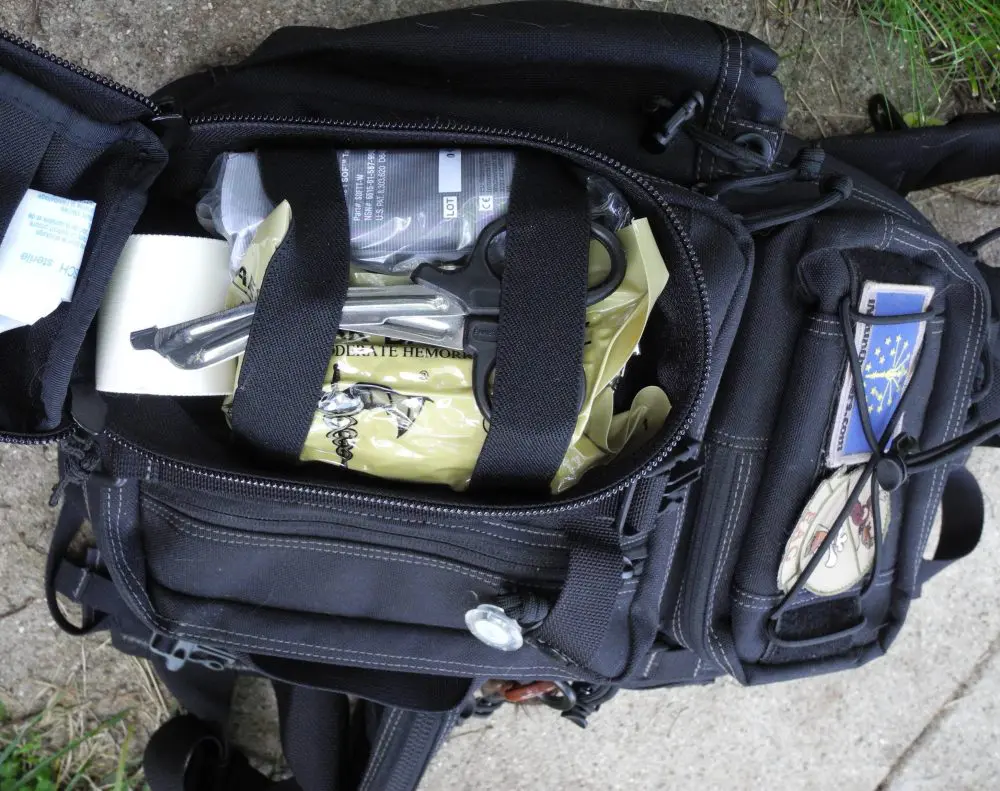Emeliano Gomez Gonzolez was speeding on the freeway. He lied to the Nebraska state trooper who stopped him. He was evasive. All true.
But should the punishment for those sins be a $124,700 fine?
On 18 August 18 2006, the Eighth District Court of Appeals said yes. The honorable judges ruled that the U.S. Justice Department could continue to keep $124,700 seized from Gonzolez on the side of the freeway.
Gonzolez and two friends had testified that the cash was legitimately acquired through gifts from family members and by emptying their own bank accounts. Gonzolez, they said, had been sent to buy a refrigerated truck for a produce business.
The government presented no evidence of drug dealing—which is of course the crime that Gonzolez was suspected of, but note he was not accused of anything. To this date, he hasn’t been accused or convicted of any crime connected with that money. In fact, his only offense ever was a single DUI.
Police presented no evidence of drugs. No records of transactions. No trail of money laundering. No videotaped drug buys. Not even the standard “confidential informant” prosecutors like to trot out in these cases.
The only evidence, besides the cash itself and Gonzolez’s nervous evasiveness during the stop (and who wouldn’t be nervous and evasive under the circumstances?), is that a drug dog alerted to the cash after it was seized, and the same dog alerted to the spot in the car where it had been kept. Yet U.S. currency is known to be widely contaminated with drug residues. And Gonzolez was driving a rental car, which may have had dozens and dozens of renters transporting who-knows-what.
Even if you think Gonzolez probably is a drug dealer and believe drug dealing should be a life-in-prison crime, that’s thin evidence. Very, very thin.
But who needs solid evidence when there’s an easier and more lucrative way to conduct “justice”?
Prosecuting Gonzolez for a crime and punishing him only after a conviction would be expensive and time-consuming. Besides, given the lack of evidence, they’d probably lose the case.
But with civil asset forfeiture (which is what the Nebraska troopers and the U.S. Justice Department used to seize and keep the money), governments can adroitly sidestep time-consuming and costly due process. They can ignore the historic protections of the Bill of Rights.
With civil asset forfeiture, government officials enjoy a cute legal fiction that only a storefront shyster could love. They’re not punishing Mr. Gonzolez for a crime, you see. They’re bringing a civil suit against the $124,700 in cash—yes, suing the pile of paper.
How could this craziness have come about? Well, it’s all based on a medieval legalism called “in rem jurisdiction.” According to Peter Joseph Loughlin, JD:
[I]n rem jurisdiction is based on pure legal fiction whereby the “thing” or property is treated as being the guilty party. This legal fiction rests upon the personification theory, whereby an inanimate object (i.e., one’s property), is imbued with a personality and then held accountable for “its” action. In rem proceedings are not altogether absent in other jurisdictions throughout the world, however, the United States uses it as the exclusive theory and basis of civil forfeiture action. However, all forms of civil (in rem) forfeiture can be traced back to Biblical origin and early English common law whereby the deodand required that the Crown be compensated for the loss of life of one of its subjects caused by an inanimate object (or animal). The price of compensation was, of course, the value of the thing.
Civil asset forfeiture was used in the U.S. even back in colonial days. But it was a minor tool utilized mostly in customs cases. Then in 1970, Congress passed the Comprehensive Drug Abuse Prevention and Control Act. The modern drug war kicked into high gear. In the name of depriving drug “kingpins” of their profits, police agencies could seize property used in or acquired as the fruit of drug crimes.
A number of asset forfeiture “reforms” followed, which were actually expansions of what could be seized and how the seized assets could be used.
One of those expansions was the Comprehensive Crime Control Act of 1984, which for the first time allowed the federal law enforcement agencies to keep the seized assets instead of turning them over to the U.S. Treasury’s General Fund. No longer did seized cash and goods simply go into “the big pot” to give taxpayers a little relief. Now, the very agencies who enforced the laws profited directly from enforcement.
This same law allowed local law enforcement agencies to be given a share—up to 80 percent—of the seized goods. With this financial incentive, civil asset forfeiture really took off.
In 1985, the Department of Justice set up a fund for collecting forfeited assets and U.S. Customs Service got a forfeiture fund of its own. That year, the Justice Department took in $27 million in seized goods. By 1991, just six years later, the take for the Justice Department had increased to $644 million—a more than twenty-fold increase. In 1992, the U.S. Treasury Department also got its own forfeiture fund.
In 2000, Congress passed the Civil Asset Forfeiture Reform Act (CAFRA), a compromise bill that attempted to address some of the worst iniquities (for instance, before CAFRA, the burden of proof was on the owner of the goods, and even a completely innocent owner could have his property seized if it was used without his knowledge in commission of a crime).
But after a pause, the federal government resumed forfeitures with renewed vigor. In 2005, the Justice Department deposited $579 million to its forfeiture fund. By the end of that year the fund held $1.4 billion in seized assets. And that’s just the take of one department at one level of government. State and local governments have also adopted civil forfeiture—sometimes for offences as petty as patronizing a prostitute or failing to insure a vehicle.
Today, suits with names like these are common:
- U. S. v. One Ford Tractor
- U.S. v. One Star Class Sloop Sailboat Built in 1930 Named Flash II
- U.S. v. 785 St. Nicholas Ave.
- U.S. v. Dodge Caravan Grand SE/Sport Van
- U.S. v. 667 Bottles of Wine
Those are all real cases—although you’d think no sensible, decent person could prosecute wine, boats or farm implements with a straight face.
And as if that weren’t bad enough, try to comprehend this: A full 80 percent of the people whose assets are seized are never charged with any crime.
But back to that suit against Mr. Gonzolez’s cash. What exactly did a heap of inert paper do to get sued? It caused some unnamed harm to the government. Therefore the various agencies involved are entitled to civil damages—in the exact amount of $124,700. To prove this case (a strictly civil case), the Justice Department needs only to demonstrate “a preponderance of evidence.” And it had to go to this length only because Gonzolez and his friends challenged the seizure. In roughly 80 percent of all forfeiture cases, the victims simply give up without a fight. The government takes their property and keeps it merely by writing them a letter telling them it’s doing so; the cost of trying to get property back is usually more than the property is worth.
On the other hand, if the government had taken Gonzolez to court in a criminal case, it would have to have met the much higher standard of “beyond a reasonable doubt.” Under criminal justice, the cash could only have been forfeited after a guilty verdict.
Civil asset forfeiture is, pure and simple, a racket. Due process? It only applies to people; we’re suing a boat or an SUV. Fourth, Fifth, Sixth and Eighth Amendment protections? A heap of cash simply isn’t entitled to them. And what of Mr. Gonzolez? Well, he’s not being punished—no matter that our own common sense informs us that the loss of $124,700 would cause hellish pain. He becomes merely a third party who happens to have an interest in the case. He doesn’t go to jail, but he has few legal protections against the cruel and unusual punishment of a $124,700 act of highway piracy, either.
And that’s not even the bad part. The bad part is much worse than anything I’ve described here. The bad part is already eating away the core of U.S. justice. The bad part is driving a wedge between police and their fellow citizens.
That will be my topic for next time.
SOURCES:
Eighth District Appeals Court decision in U.S. vs. $124,700 in U.S. Currency
www.thenewspaper.com/rlc/docs/2006/moneyseize.pdf
Peter Joseph Loughlin, J.D., “Does the Civil Asset Forfeiture Reform Act of 2000 Bring a Modicum of Sanity to the Federal Civil Forfeiture System?”
http://www.malet.com/does_the_civil_asset_forfeiture_.htm
Cornell University Law School “L’il Backgrounder on Forfeiture”
http://www.law.cornell.edu/background/forfeiture/
Brant Hadaway, “Executive Privateers”
http://www.fear.org/hadaway.html
U.S. Department of Justice Asset Forfeiture Fund
http://www.justice.gov/jmd/afp/02fundreport/02_2.html




